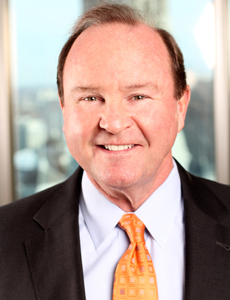Employee Benefits
Rising Health Care Costs Concern Businesses

Rising health care costs are a top risk organizations fear, according to the “2015 Business Risk Survey” by the Graham Co.
A majority of the 300 respondents reported taking adequate measures to mitigate the risk, but insurance professionals are not so sure.
Health care costs have “exceeded inflation by two or three times. This is what keeps business owners up at night,” said Ken Ewell, Graham Co. president and COO. “This thing has been going on for a long, long time, and now with the Affordable Care Act and all the regulatory guidelines, red tape, penalties, it’s a little bit scary.”
Bill Ziebell, north central region executive vice president for Arthur J. Gallagher & Co., agreed.
In Gallagher’s recently released “2015 Benefits Strategy & Benchmarking Survey,” 90 percent of 3,000 respondents reported an increase in health care costs last year, and 25 percent saw double-digit increases.
Of course, rising health care cost concerns are nothing new. “Health care costs started to creep in around the late ’80s, early ’90s and it just stayed there,” said Ewell, who attributed the problem to policy failures from both parties in Washington.
But the concerns now seem intractable, he said. “People are realizing it’s not going away. The Affordable Care Act was not a silver bullet. And just the contrary, they’re inundated now with regulatory and reporting requirements.”
Many employers, said John Kirke, president of employee benefits and health risk management at IMA, hoped the ACA would reduce costs. “But,” he said, “it has not. There is more regulation, but there is nothing to do with cost controls inside ACA.”
Few businesses appear to be responding effectively to rising health care costs.
Ziebell said that nearly all survey respondents (91 percent) did not have “a written, forward-thinking plan for their comp and benefits.”
“Instead, they’re relying on the same strategies they’ve been using forever … cost shifting to their employees [and] shopping the carriers. … With the mergers and consolidation on the carrier side, that’s a runway that’s coming to an end real quickly.
Few businesses appear to be responding effectively to rising health care costs.
In addition, he noted that more than one-third of the survey respondents (35 percent) were unsure if their plans will be affected by the Cadillac tax in 2018.
“People are very tactical, very short-sighted on these things right now,” he said.
Still, some employers are reviewing options and thinking strategically.
IMA’s Kirke said his “best performer” clients are thinking creatively about cost strategies and population risk strategies. Some are breaking their health care into individual components — claims, pharmacy, care management, customer service — and shopping them separately.
“They are lifting the veil on the components of what I call ‘big box buying’ … and having a much more ‘precision purchasing’ view. It’s a lot of work, but we are finding value in the deconstruction of that big box,” Kirke said.
Others are setting their own prices by “being a price maker instead of a price taker,” he said. “They are reaping incredible value and lower prices by setting the price inside their plan and plan documents, and reimbursing at a level far lower than what we’ve seen in the market.”
And some are using advanced data analysis to deliver the care their employees need, reducing unnecessary costs while at the same time adding services employees want.
Ewell said some of his clients are embracing a more holistic approach, moving beyond traditional wellness targets to offer assistance in addressing emotional and financial issues, which can be the root causes of stress-related illnesses.
Others are using data to make more informed choices among sometimes huge price disparities among medical technology providers. And many have seen the benefit of offering a variety of plans, as well as health savings accounts and health reimbursement accounts.
It’s important for companies to be proactive and think strategically.
“People not only chose what was best for them, but they felt good about being educated, making their own decision, and knowing that next year they can look at it again,” Ewell said.
It’s important for companies to be proactive and think strategically.
“The ones that are doing well are the ones that are putting the necessary focus on the strategies overall for their company and that look at their human capital as something that is as important as their growth strategy,” said Ziebell.
He also recommended that companies evaluate workforce demographics as a first step toward creating a strategic and holistic plan.
Kirke has similar advice. “We want them to act with a strategic plan, not to be so reactive. We want them to think big. Three years out, five years out,” he said.
Ewell said organizations must “become as educated as possible about what the alternatives are to just taking it on the chin and having higher costs. … Align yourself with professionals who do this everyday and find a broker or some other professional who can give advice on a broad range of issues related to health care costs and help guide you through the process.”
The silver lining to all this is that approaching the problem strategically, creatively and proactively can not only minimize that risk, but turn it into a business advantage.
“Without question,” Kirke said, “these moves will absolutely lower operating costs and improve margin inside P&Ls.”











